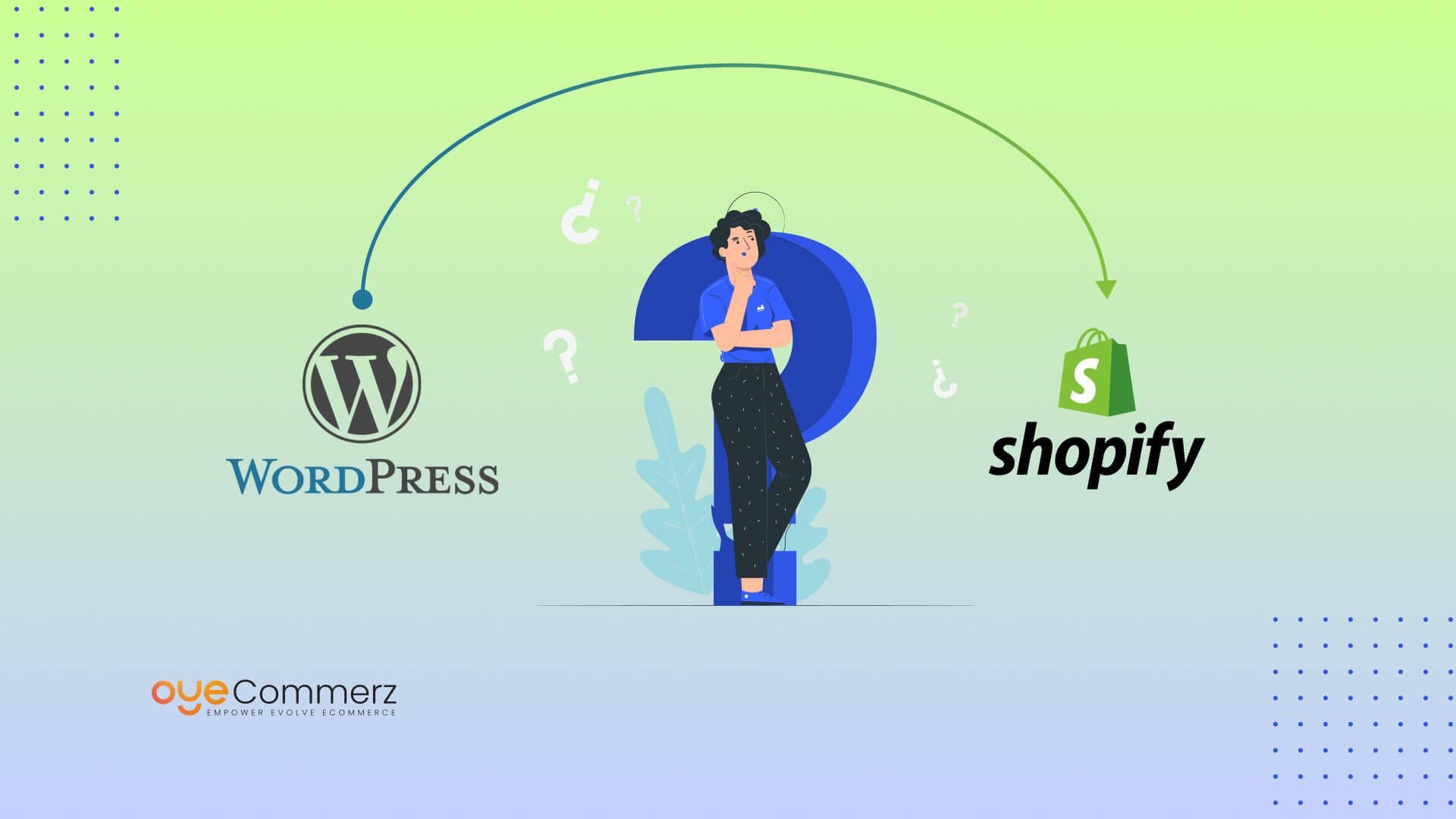Shifting from WP to Shopify marks an exciting step toward streamlining your online store operations. As businesses expand, choosing a platform that aligns with scalability, user experience, and customization is essential. Shopify has emerged as a preferred choice for online merchants, providing unmatched adaptability, security, and ease of use. In this guide, we’ll explore the transformative impact of this migration, highlight the benefits, and share practical tips to facilitate a smooth transition.
1. Why Switch from WordPress to Shopify?
WordPress, paired with WooCommerce, continues to support countless online stores. Nevertheless, as businesses scale, challenges like plugin dependency, data risks, and complex setups often obstruct growth. Shopify, specifically created for digital retail, addresses these issues with an all-in-one, user-friendly platform. Statistics supports this transition—Shopify hosts over 4.4 million stores worldwide, with a reported 10% increase in sales conversion rates for numerous merchants post-switch.
2. Key Benefits of Shopify for E-commerce Success
Shopify’s robust ecosystem is tailored for expanding brands. Its standout features include:
- Seamless Customization: Shopify offers over 80 expertly crafted themes.
- Built-in Features: Features like Shopify Payments and built-in SEO save time and effort.
- Global Reach: Multi-currency support and localization features enable businesses to expand internationally.
Additionally, Shopify delivers an uptime rate of 99.98%, ensuring your website remains accessible.
3. Preparing for WordPress to Shopify Migration
Prior to starting the migration process, assess your existing setup. Analyze inventory details, customer details, and SEO performance. Tools like Shopify’s Migration Kit or external tools help ease the transition. Develop a comprehensive plan, making sure all assets—product descriptions, media files, and articles—are optimized for transfer.
4. Data Migration: A Critical Step
Data migration forms the foundation for a smooth transition. When moving from WordPress to Shopify, prioritize:
- Product Information: SKU, item summaries, and categories.
- Client Information: Emails, order history, and preferences.
- Search Engine Considerations: Preserve meta tags, URLs, and redirects to avoid SEO losses.
Use apps like LitExtension to facilitate seamless migration while reducing mistakes. Shopify migration pricing
5. Customizing Your Shopify Store
Post-migration, personalizing your Shopify store helps it aligns with your brand. Utilize Shopify’s intuitive page builder to design pages effortlessly. Shopify's themes are mobile-responsive, providing a seamless UX across devices—a critical factor, given 74% of online shopping is generated by mobile visitors.
6. Maintaining SEO During Migration
SEO is vital for preserving your visibility during migration. Shopify is highly optimized for search engines with organized link formatting, built-in optimization tools, and seamless blog integration. Ensure:
- Set up URL forwarding for existing links.
- Enhance updated content with targeted phrases.
- Leverage plugins like Plug in SEO to track analytics after the switch.
7. Essential Tests After Migrating to Shopify
Once the migration is complete, conduct thorough testing.
Check: - Page load times (Shopify delivers faster speeds compared to WP).
- Payment integration reliability and transaction flow.
- Mobile responsiveness.
Testing ensures your store provides a seamless shopping journey from the start.
8. Real-Life Success Story
One such migration success story is Gymshark, a sportswear company that moved to Shopify. Post-migration, the company experienced a 60% increase in mobile sales and reduced site downtime. This showcases the potential of Shopify in driving e-commerce growth.
9. Challenges and Solutions
Migration comes Seamless Shopify migration with challenges, such as data integrity and adjusting tailored features. However, Shopify’s extensive assistance and external professionals simplify the process. Collaborating with qualified Shopify developers helps guarantee a trouble-free transition.
10. Starting Your Journey with Shopify
Migrating from WordPress to Shopify represents a forward-thinking decision to online retail. By focusing on growth, streamlining operations, and enhancing the customer experience, Shopify empowers businesses to thrive in competitive markets.
Final Thoughts
Transitioning from WordPress to Shopify offers a smart solution that can greatly enhance your online business performance. With a well-structured strategy, the right tools, and expert support, you can achieve new success milestones.
Excited to start the journey? Let’s discuss how our Shopify migration services can revolutionize your e-commerce platform. Get in touch today, or ask yourself: Can your business afford to miss out on Shopify’s growth potential?
